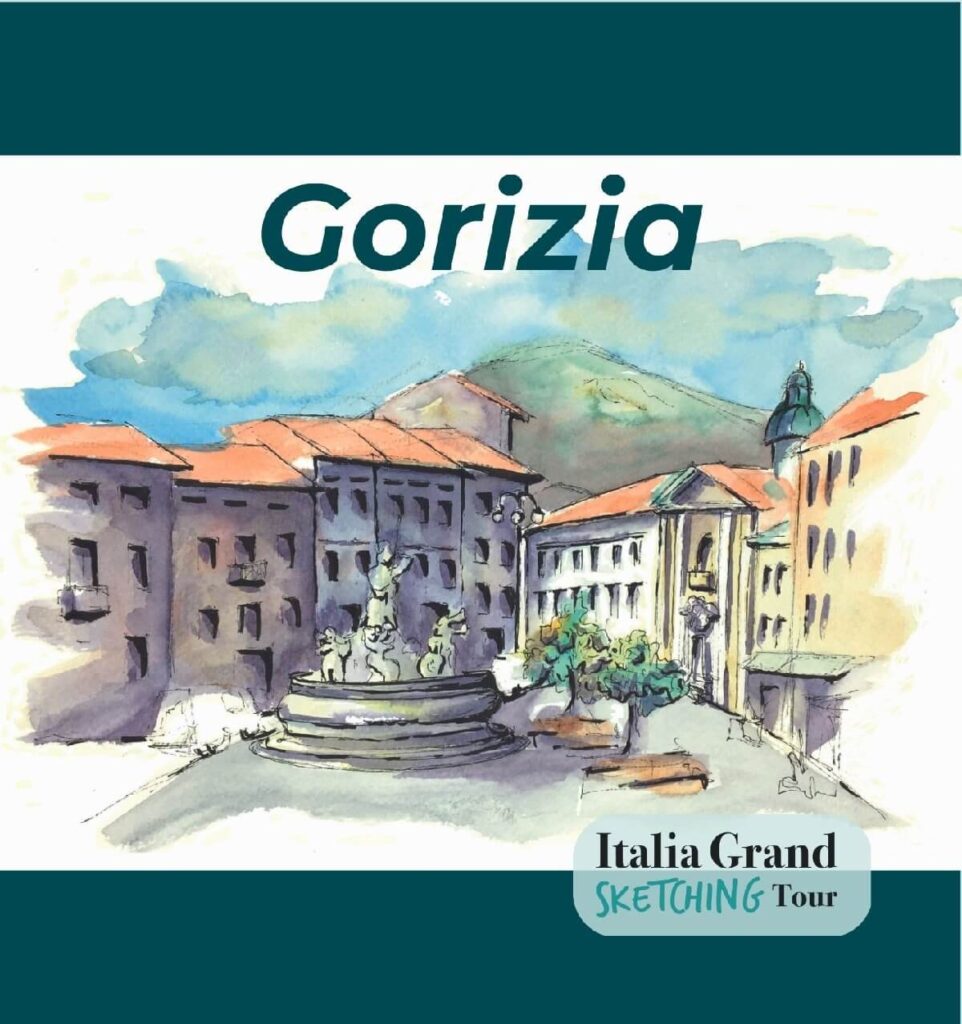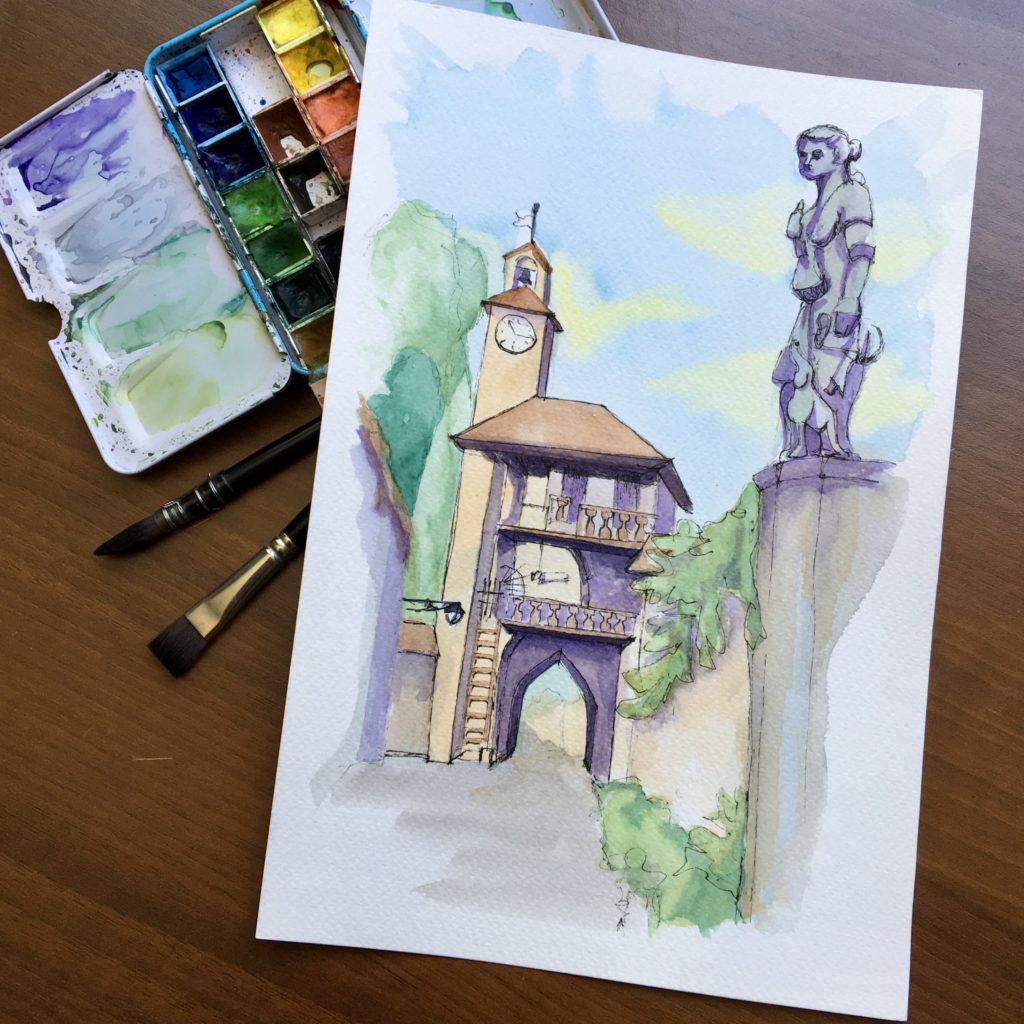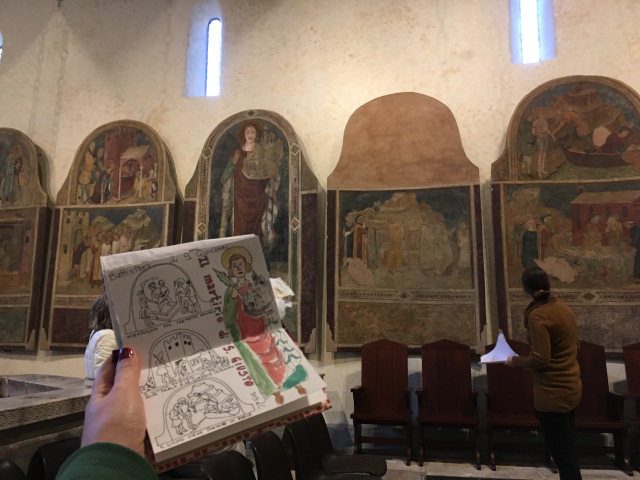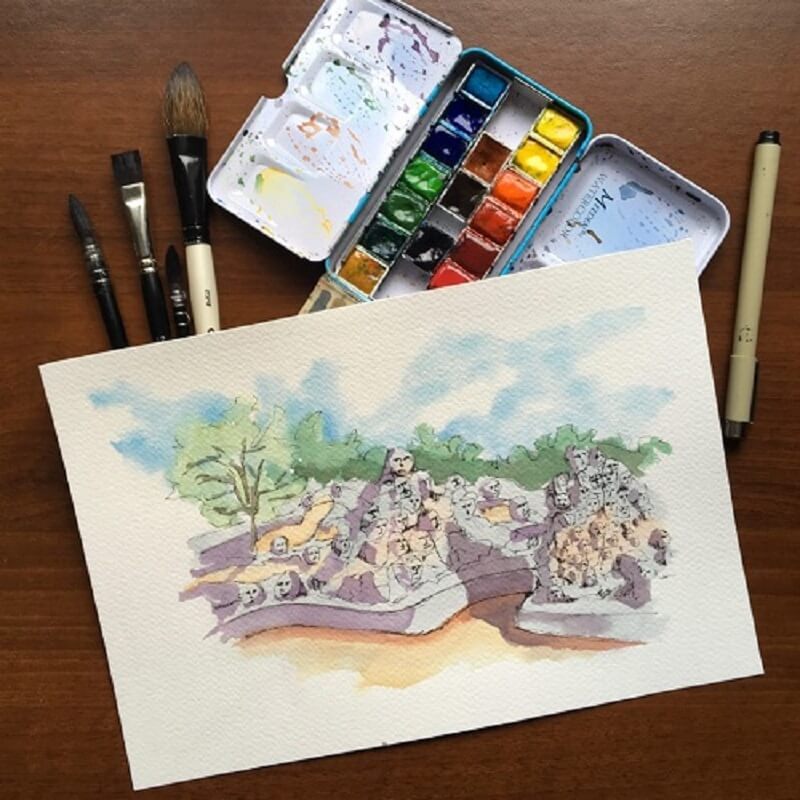Suggested locations to visit in the city of Gorizia
The city of Gorizia is in Friuli Venezia Giulia but is located right on the border of present-day Slovenia. This, as we will see, makes it a particularly significant place for the recent history of Italy. Despite its proximity to Trieste, I have been to Gorizia only a few times and it was interesting to start from here with the Italia Grand Sketching Tour because it is a small city but full of fascinating views.
Going back there a few weeks ago was exciting, both because I was able to see again the places I painted and which marked the beginning of my artistic journey and because I explored some places I wasn’t able to visit before with my new eyes.
Here I collected for you the 8 places that you absolutely must visit if you take a tour in Gorizia. Let’s go!
1. Piazzale della Transalpina
Let’s start our tour from a decentralized place in Gorizia but a very important one for the recent history of Italy: it is the Transalpina Square. The municipality of Gorizia until 1947 included the territory of the Slovenian city of Nova Gorica, located along the Isonzo river. In the year of the separation, after the Treaty of Paris, the square, like the city itself, was divided and the “Muro di Gorizia” was built. It was a wall that remained for almost 50 years.
Piazzale della Transalpina became a symbol of political-ideological separation between Western and Eastern Europe during the years of the Cold War. When the wall fell, the same square became an emblem of the fall of borders and so it remains today.
2. Piazza della Vittoria and the Neptune Fountain
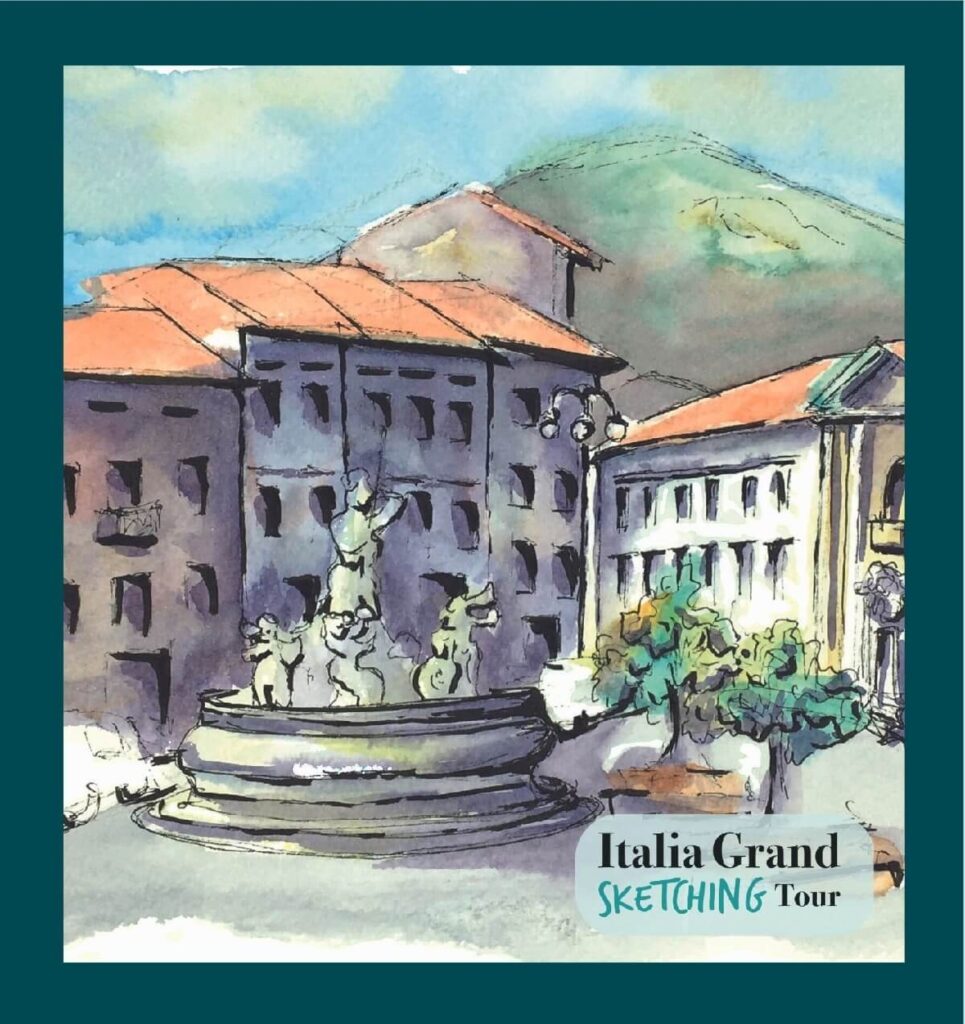
The area now occupied by Piazza della Vittoria was a meadow and only in the 16th Century Gorizia began to expand at the foot of the castle. Scattered houses began to rise in this area and later in the 18th Century the church of Sant’Ignazio was built. Subsequently there were urban interventions which gave to the square a new aspect and the new name of “Piazza Grande” (Big Square).
The monumental Fountain of Neptune was also built in 1756 by the sculptor Marco Chiereghin based on a design by Nicolò Pacassi, the architect from Gorizia who designed the Schönbrunn palace.
Painting this square was a real challenge because I wanted to capture the glimpse of the street, the mountains in the background and the fountain in the center of the square: many subjects to be enclosed in a small space.
3. Via Rastello: the hearth of Gorizia
Moving away from the square, you pass through a long street of shops and arcades called Via Rastello. This is the city street which over the centuries was dedicated to trade. A part is of medieval origin and it takes its name from that period. The road was closed at night with a gate in the shape of a “rake” (rastrello) to prevent access to the village by those coming from the surrounding countryside. The second part was built in the 17th Century.
In the 19th Century the chronicles tell that here the traffic was frenetic. People and carriages came from all the surrounding areas to buy and to sell their goods in this unique trading area.
4. Piazza Sant’Antonio and Palazzo Lantieri
Another very fascinating area of Gorizia is Piazza Sant’Antonio, occupied since the 13th century by a Franciscan convent. The arcades that delimit three sides of the square belonged to an ancient late medieval church which underwent important transformations in the 17th century. After the suppressions of Joseph II, the monastery was transformed first into barracks and then into a hospital in the 19th century.
Part of the square is occupied by Palazzo Lantieri. It is still the prestigious residence of the family. It was built in the mid-1300s as a guesthouse for the counts of Gorizia. Guests, who took part in hunting trips and tournaments organized by the counts, stayed here.
5. The Cathedral of Gorizia dedicated to Saint Ilario and Tanziano
Surrounded by low and dense buildings, the Cathedral looks like a simple palace whose facade was rebuilt in 1924 after the destruction of the first war. However, the original place of worship is very old, at least from the 14th century. Works and testimonies of the medieval history of Gorizia are preserved inside. The interior is rich also in marble decorations from the 1700s.
The bell tower is imposing but difficult to capture due to the Duomo’s location in a densely built area which does not leave to the tower much room to breathe, but this does not detract from its charm.
6. The Castle of Gorizia and its hamlet
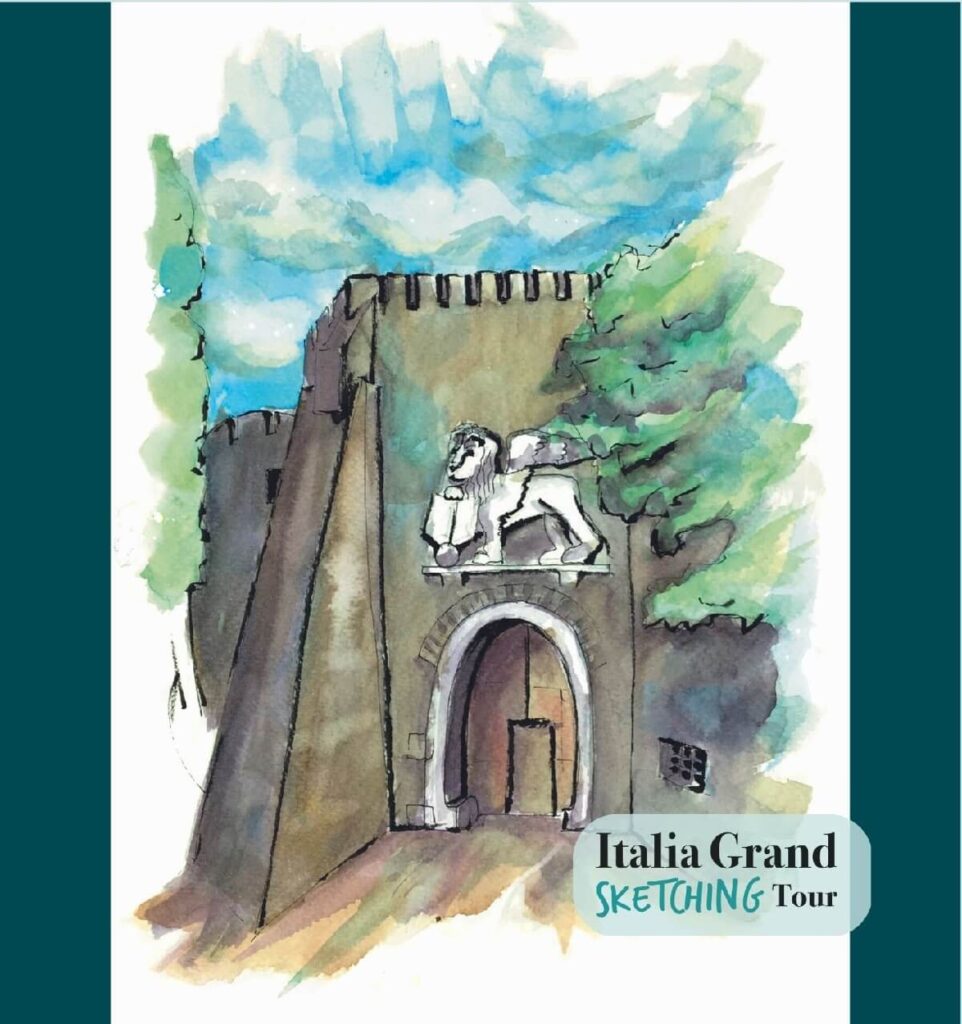
The medieval castle and the village that surrounds it is the oldest nucleus of the city. It dates back to the 11th century, when the title of the Counts of Gorizia was created. Over the centuries they extended their dominion over a territory that went from Tyrol to Istria .
In 1500 the feud passed to Emperor Maximilian I of the Habsburgs, to then be conquered by the Venetians for a short period. The castle changed its uses and shape over the centuries but with the First World War it was partly destroyed. The restorations rebuilt its medieval aspect and today it is a museum.
The climb to the castle is very pleasant because it allows you to explore a village full of historical buildings that housed nobles, feudal lords, followers, collaborators and servants in a varied mix of architectures.
7. The medieval church of Santo Spirito
Descending from the castle, you come across this marvelous little church from 1398 dedicated to Santo Spirito. I stopped to draw it in its typical lines of the Venetian style with the rose window and the two small vertical windows. The interior is made up of three small Gothic apses.
It was built by the brothers Michele and Giovanni Rabatta to offer a place of worship to the inhabitants of Borgo Castello. This little jewel is a unique example of a mix between the Venetian style and the Nordic tradition.
8. The tower watch of Palazzo delle Poste
Moving away from the ancient center of Gorizia, you pass along 19th-century boulevard and come across the Palazzo delle Poste. It was built in the 1930s in a rationalist style based on a project by Angiolo Mazzoni. It is a significant example of this style with its grandeur and monumentality.
It is divided into three elements which are incorporated in the civic tower where the characteristic clock is located. Its peculiarity are the spheres that light up in a ruby red color at night.
9. Corso Francesco Giuseppe, now Corso Italia
Despite being a small city, Gorizia was at the beginning of the 19th century a renowned destination among travelers of the Austrian bourgeoisie for the beauty of the landscape and the temperate climate. Travel was favored by the construction in 1860 of the railway station outside the historic center. It is reached through the long and wide avenue that was created in that period and named after Francesco Giuseppe.
Together with the Corso, the new urban fabric developed and numerous villas surrounded by greenery were built on it. Still today this walk is extremely pleasant thanks to those buildings. In the same period numerous parks and private gardens were also created which helped to give to Gorizia the name of “Austrian Nice”.
Where do you want to go after Gorizia?
My tour of Gorizia has led me to greatly appreciate this city which possesses an almost decadent grace. Here walking becomes an extremely conscious activity. Looking around, discovering new corners, getting lost in the ancient alleys and mentally transforming these glimpses into watercolor spots was a sensory journey that made me rediscover the desire to explore after the cold of the winter.
I am happy that you came with me on this tour and I hope that you too can experience this feeling of serenity and joy that only a journey made with the heart can bring.
If you liked my way of painting and storytelling and you want to continue exploring Italy with me, you can do it right away with the digital version of my books, the two volumes of the Italy Grand Sketching Tour that you can buy exclusively on my site.
Come with me in the ITALIA GRAND SKETCHING CLUB
If you want to stay in touch, take part in my community where I will involve you in my watercolor explorations: paintings, stories and experiences to live moments of relaxation and discovery with passion and lightness.
The form you have selected does not exist.
